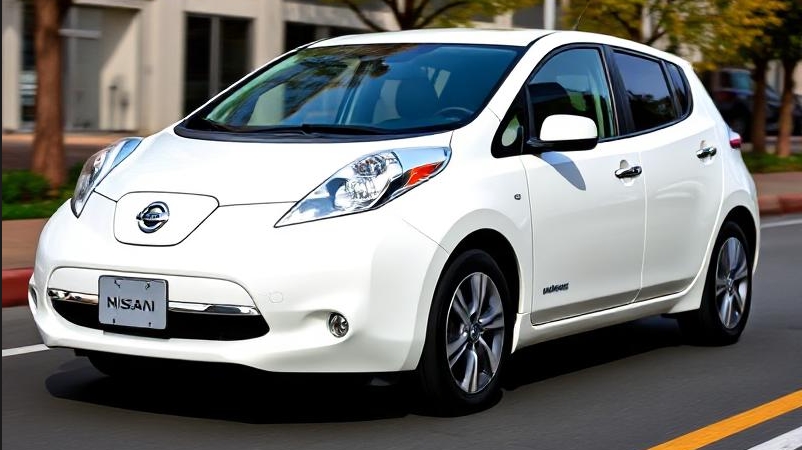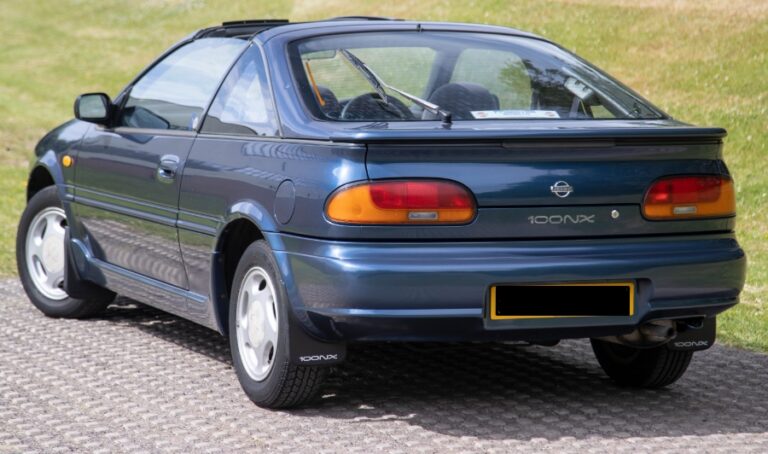The Evolution of the Nissan Leaf: A Pioneering Electric Vehicle
The Nissan Leaf has become a symbol of progress in the world of electric vehicles (EVs). Since its introduction in 2010, the Leaf has undergone various transformations, reflecting technological advancements and shifts in consumer preferences. This article delves into the evolution of the Nissan Leaf, outlining its models, trim levels, and key technological advancements throughout its production history.
1. Introduction of the First Generation (2010 – 2017)
2010 – Nissan Leaf Launch
Nissan officially launched the Leaf in December 2010 as the first mass-market electric vehicle. The Leaf was a groundbreaking model that pushed boundaries with a 24 kWh lithium-ion battery, capable of achieving an EPA-estimated range of 73 miles. Initially available in three trim levels—SV, SL, and a base model—it featured a compact design optimized for urban driving. Key features included a navigation system, a rearview camera, and a standard onboard charger.
2011 – Expansion and Refinements
In 2011, the Leaf was introduced in select markets worldwide. Refinements included updates to the driving range (79 miles) and improvements in battery management. Nissan introduced complimentary charging on the new DC fast charger stations, allowing quick top-ups at public charging stations.
2013 – Battery and Range Improvements
The 2013 model year saw significant enhancements, including the introduction of a new 6.6 kW onboard charger for faster charging times and a more practical 24 kWh battery option. This generation’s Leaf was also equipped with features such as an improved infotainment system and added safety features like a rearview camera.
2015 – Larger Battery and New Features
In 2015, Nissan introduced the Leaf with a larger 30 kWh battery, extending the driving range to approximately 107 miles. The trim lineup expanded to include the S, SV, and SL variants, adding further distinctions in terms of luxury and technology features.
2016 – Design Updates
The 2016 model came with refreshed styling updates, new LED headlights, and improved interior materials. Nissan added technology features like smartphone connectivity and safety features such as adaptive cruise control and lane departure warning.
2017 – The 40 kWh Battery
2017 marked the introduction of the 40 kWh battery, providing a range of about 150 miles, setting the stage for the model’s continued evolution. Different trim options—S, SV, and SL—carried over from the previous year, with additional standard features across the range.
.

.
2. Second Generation (2018 – Present)
In 2018, Nissan unveiled the second generation of the Leaf at the Tokyo Motor Show, introducing a new design and advanced technology features. The 2018 Leaf shed its rounded form in favor of a more conventional hatchback style, becoming sleeker and sportier.
2018 – All-New Design and ProPILOT Assist
The 2018 Leaf debuted with a 40 kWh battery and introduced Nissan’s ProPILOT Assist, providing semi-autonomous driving capabilities. The trim levels were streamlined to include S, SV, and SL, mimicking the first generation while incorporating fresh technologies and safety enhancements.
2019 – Enhanced Performance
In 2019, Nissan introduced a new Leaf e+, which featured a larger 62 kWh battery capable of an estimated range of 226 miles. The enhanced Leaf e+ also received a power boost, increasing its horsepower to 214. This model offered greater performance, appealing to buyers looking for a more abundant range.
2020 – Technology Upgrades
As technology rapidly evolved, the 2020 Leaf benefited from over-the-air updates and improved connectivity options. The trim levels remained the same, with the e+ version maintaining its position as the most powerful offering.
2021 – Continued Refinements
In 2021, the Leaf offered additional safety features, including more advanced safety systems like rear cross-traffic alert and blind-spot monitoring, providing drivers with a more secure driving experience. The range of the standard Leaf remained approximately 149 miles, while the Leaf e+ retained the longer range of around 226 miles.
2022 – Celebration of Electric Mobility
The 2022 Leaf celebrated its continued success as one of the best-selling electric vehicles globally. Nissan added new color options and minimal aesthetic updates while ensuring that the Leaf was equipped with the latest driver assistance technologies.
2023 – Features and Positioning in the Market
By 2023, the Nissan Leaf had established itself firmly among the segment of affordable electric vehicles. With competitive pricing, advanced driver-assistance features, and a spacious interior, the Leaf continued to appeal to eco-conscious consumers and families alike. In this final iteration of the second generation, Nissan maintained the S, SV, and SL trims but with revised options and packages that catered to customer preferences.
3. Future Outlook
As of October 2023, Nissan is rumored to be planning a substantial update for the Leaf. As demand for electric vehicles grows, the Leaf will likely incorporate improvements in battery technology, including higher capacity options and faster charging capabilities. With growing competition from other automakers, Nissan understands the importance of keeping the Leaf relevant through innovation and performance enhancements.
Conclusion
The evolution of the Nissan Leaf from its inception in 2010 to present-day models represents a significant chapter in the automotive industry’s shift toward electrification. Through two generations, multiple trim configurations, and a growing array of advanced features, the Leaf has adapted to meet market demands while remaining true to its roots as an affordable and accessible electric vehicle.
As Nissan continues to innovate and expand its EV offerings, the Leaf stands as a testament to the brand’s commitment to sustainability and environmental consciousness. The Leaf’s journey over the past decade serves as an inspiration for the future of electric mobility and its potential to reshape the automobile landscape.







